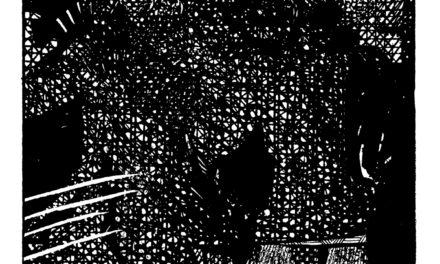Letter from the Editors
by Meera Velu and Devon Montgomery
Issue 7: Horror
Speculative fiction is a category of literature that pulls tricks. It advantageously fuses and exploits features of multiple fiction genres to deliver works that both subvert and entertain—we’re talking about interstellar rom-coms and slasher fairy fantasies. In an ode to the elements that make speculative fiction what it is, this year, Speculative City will focus each quarterly issue on a specific genre.
To kick off the spring, we delve into the inky depths of horror. Issue 7 presents four short stories and a poem steeped in the dread, darkness, and uncertainty that mark the horror genre as a staple of speculative fiction.
Part of the genre’s flair comes from its ability to embody seemingly contradictory elements. Works in the issue demonstrate this well. As typical with horror, the stories also discomfort and provoke a reaction. Featured narratives present characters who play both victim and perpetrator, as well as monsters with motivations that speak to the terrors behind our desires and the anxiety of not wholly understanding our actions.
The issue starts with a subtle piece, “A Trick of Light” by Hamilton Perez. This story, in a brilliant expression of the horror genre, builds tension only to subvert expectations. Readers are implored to question with which character to sympathize: demon or dame.
Each story that follows hones in on another classic element of horror: gore. These stories focus on physicality—the search for the perfect body or mind, and the madness that drives that wish fulfillment.
Tara Campbell’s “Spencer” re-envisions Frankenstein, while Joanna Koch’s “Rogue” twists competing tropes of deceptive woman and woman victim into a brain surgeon extraordinaire. To finish, Wade J. Stillman’s “Skin Deep” explores the boundaries of devotional self-sacrifice and probes into how devotion can become a form of self-harm.
Moving out of fiction, Canadian collaborative MA|DE, through illustration and word, visualizes spaces of unease with “Into Thick Air.”
Finally, to close the issue, we speak with author Lindsay King-Miller on the practice of writing horror and, most importantly, on what we all can learn from Ginger Fitzgerald.
We hope that these tales of horror regale you, and don’t stop speculating!




